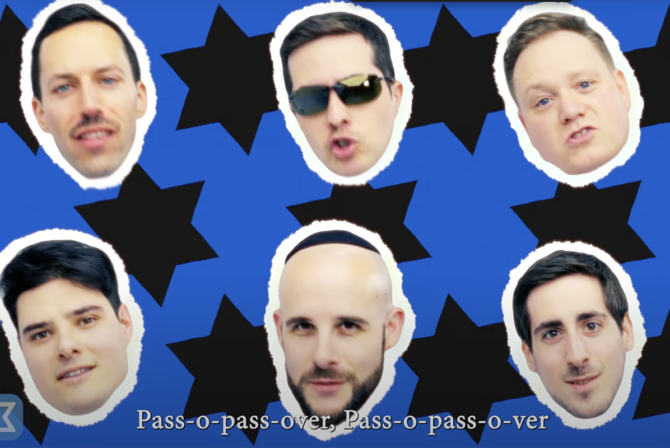Potty training time: A major milestone for both you and your child, but a lot more work than coaxing out that first gummy smile. Potty training can take weeks, months, or even years to master.
However, there are several reasons why you may want to try a quicker, more focused, and streamlined potty training method for your ready-yet-potty-resistant-kid. Maybe he’s starting preschool and they have a potty policy; maybe a new sibling is on the way; or maybe you are both just ready to move on with this growing-up business and think a little independence can be an emotionally healthy thing.
Plus, you know, diapers. Am I right?
So here are seven steps to potty training in a weekend:
1. Assess your child’s readiness to potty.
You can determine that your child is ready to potty by evaluating these three things:
Bladder control: Does he urinate a lot at once and then stay dry in between? Does he show signs that he’s about to go with a facial expression or behavior?
Physical ability: Does she have the fine motor skills to grab objects easily? Does she have the gross motor skills to walk, carry, and climb?
Social responsiveness: Does he know the parts of his body and follow simple directions?
Play a little game and test him out if you’re not sure. If he doesn’t have the language development to understand any of the above, can he learn them in a short amount of time?
2. Time it right.
Every child is different, but your child may be ready around age 2. If you’ve determined that your child is ready, and you want to go full steam ahead, prioritize your weekend potty plan and avoid other activities until Monday. If you know you have too much going on this weekend and there will be too many distractions, or you have to travel, or you’re not feeling well, or the toilets’ broken, or you’re moving on Wednesday, or you have to take an important business call, or walk your neighbor’s dog three times, plan potty training for another weekend.
When the right time comes, clear your schedule, get the other kids out of the house, have meals prepared ahead of time, turn off your phone, and make today about you and the little pants-less cutie pie in your life.
3. Pick some positive reinforcement.
Choose items, praise, and privileges to use for positive reinforcement when your child goes on the potty and keeps her underwear dry. These can be super cool stickers that she can put on her hands or feet or a wall chart. Or you can call someone special, such as Grandma, and brag in front of your child about her accomplishment. If you have a particularly talented family member, you can have them talk to your child on the phone as her favorite character (I’m guessing Elmo) to praise her behavior.
4. Let them in on it.
Talk to him about the plan ahead of time, at least a few days in advance. Pick out under wear together, admire the design, and take a tour of the bathroom. The night before, let him know that at wake up the next day, you will say bye-bye to his diapers together and wear underwear like all the other potty trained people of the world.
5. Let your child be a teacher.
Beginning a few days ahead of time, help your child teach her own baby doll to go on the potty. “Feed” the doll a bottle together and discuss how the liquid goes into its belly and comes out as pee-pee. Have your child put the doll on the potty and look for something to “come out.” You can hug and praise and high five the baby doll when it “goes.”
6. Plan ahead.
Plan to start as soon as your child wakes up in the morning by conducting a ceremonial “bye-bye” to his diaper. Sing it a farewell song, wish it well, and put it away. Put underwear on your child and comfy pants that are easy to pull down. No suspenders, for sure! Have a breakfast picnic ready on the floor outside of the bathroom.
Breakfast should include salty snacks to make him thirsty and plenty of whatever liquid you know he’ll guzzle down. You want to guarantee that he has something in him that needs to come out, so today is not the day to be picky about a balanced diet. That’s not to say you should give him junk food, but certainly only offer foods you know he’ll happily eat and will make him thirsty so he is motivated to drink a lot and fill his bladder quickly and often.
Have some books and toys around, even a video (did she say video?!?) handy to keep him in the general vicinity. This will also help him feel like the whole day is one big privilege. Once he drinks down a whole cup of something, wait five minutes and put him on the potty. Be sure to use relevant language throughout the process. For example, “Now it’s time to go make pee-pee on the potty so pull down your underwear. Let’s watch for the pee-pee to come out so you can get a sticker!”
Be patient and talk him through it. “Did pee-pee come out yet? It’s almost here!” When it does come out, make a big stinkin’ deal about it, complete with high fives, applause, and some sort of your planned positive reinforcement.Then stand up, admire the deposit together, and have your child dump the contents into the toilet (if you’re using a floor potty). Flush and wash hands. Offer enthusiastic praise for every step of the way.
Then go right back to the business of salty snacks, big drinks, and videos on the floor outside of the bathroom. Try to make the picnic area as comfy and appealing as possible to increase the likelihood that your child will want to stay there for at least the next two hours. Wait 10 minutes and do the potty thing again.
Once you’ve done this a few times and your child seems to be making the connection,space it out. Slow down the pace of the drinking, wait an additional five minutes before taking your child to the potty, and keep up the positive reinforcement for both peeing on the potty and for keeping his underwear dry between potty trips. Encourage him to tell you if he has the urge to go by giving him a line to say, like: “I have to go potty,” or “Pee-pee now.”
Once you’ve gotten to 30 minutes between potty visits, ask him if he has to go before taking him. You might be pleasantly surprised by his ability to self-regulate his potty use and even spontaneously express the urge!
Stubborn behavior getting in the way? Get down to his eye level when you give instruction and wait for him to follow through before moving on to the next step. Offer gentle hand-over-hand assistance if he doesn’t respond and offer a praise and a reward when he does what you ask, even if you had to help him. If he has an accident, have him help clean it up and change his underwear. Don’t demean or criticize him harshly, but gently remind him that we make pee-pee in the potty and we will try again next time. Accidents are a possibility and it’s OK! Apply the same principle to bowel movements.
7. Reinforce your accomplishments.
Continue to ask your child throughout the day if she has to use the potty, and encourage her to tell you on her own. Continue to offer positive reinforcement for proper potty behavior, then gradually remove rewards for every other potty trip for the next few days until your child is simply going to the potty on her own, 100%.
Try to avoid diapers at bedtime as well, to avoid regression. Give your child her last drink two hours before bedtime and leave a night light in the bathroom so she can go if needed. There may be accidents the first couple nights, but if you layer an extra mattress protector over the bed sheet and put another sheet on top of that, you can just whisk away the wet linens and have a fresh one already in place. Unless there is a medical condition to consider, your child should stay dry after only a few nights.
Try to stay home for the whole weekend to maintain the routine and then when you hit the road for Monday’s regular goings on, you’ll be home (and diaper) free!
This post is sponsored by Mommy Support Coaching and Consulting Services. Sara Goldfuss launched this service to offer personalized and group assistance to families with behavioral, sleep, and potty challenges, as well as maternity needs for women at every stage of pregnancy. A certified sleep consultant, potty training professional, and maternity coach, Sara uses her experience as a mom and in the classroom to provide “thoughtful guidance for every stage of parenthood.”
Like this post? Get the best of Kveller delivered straight to your inbox.







